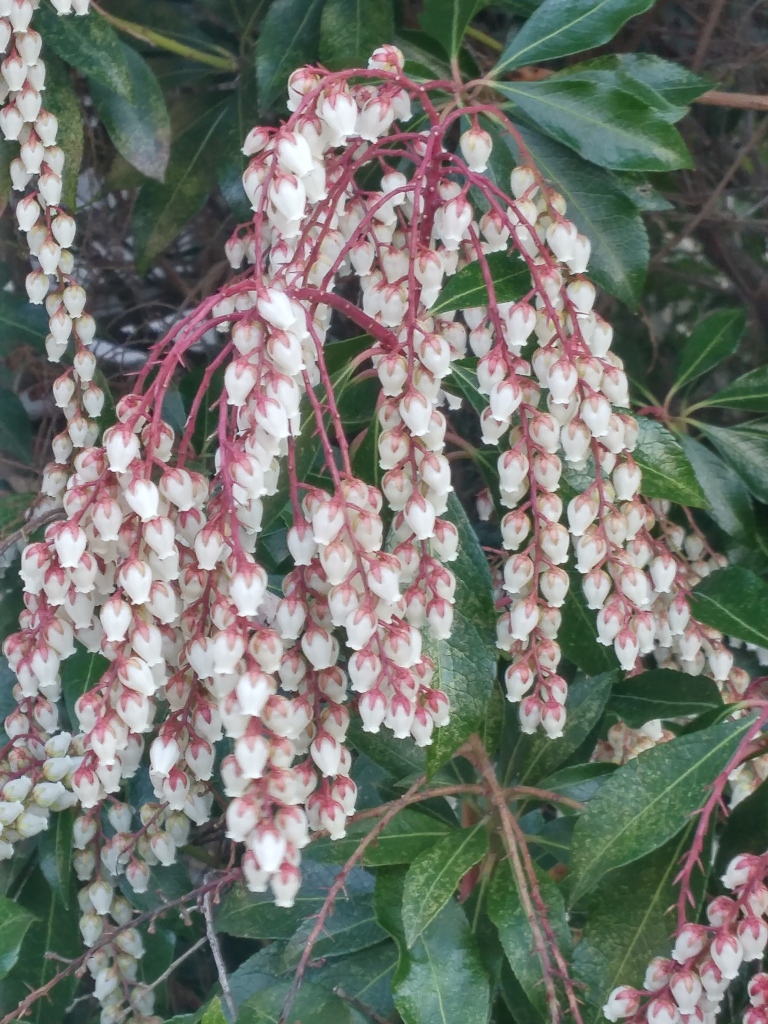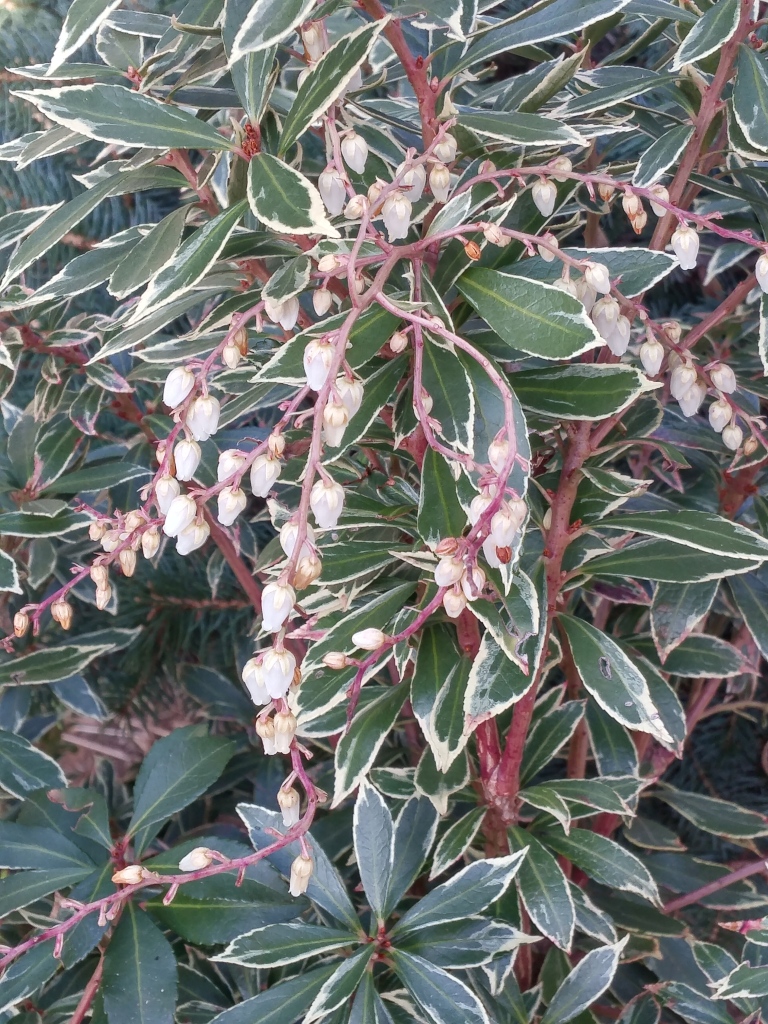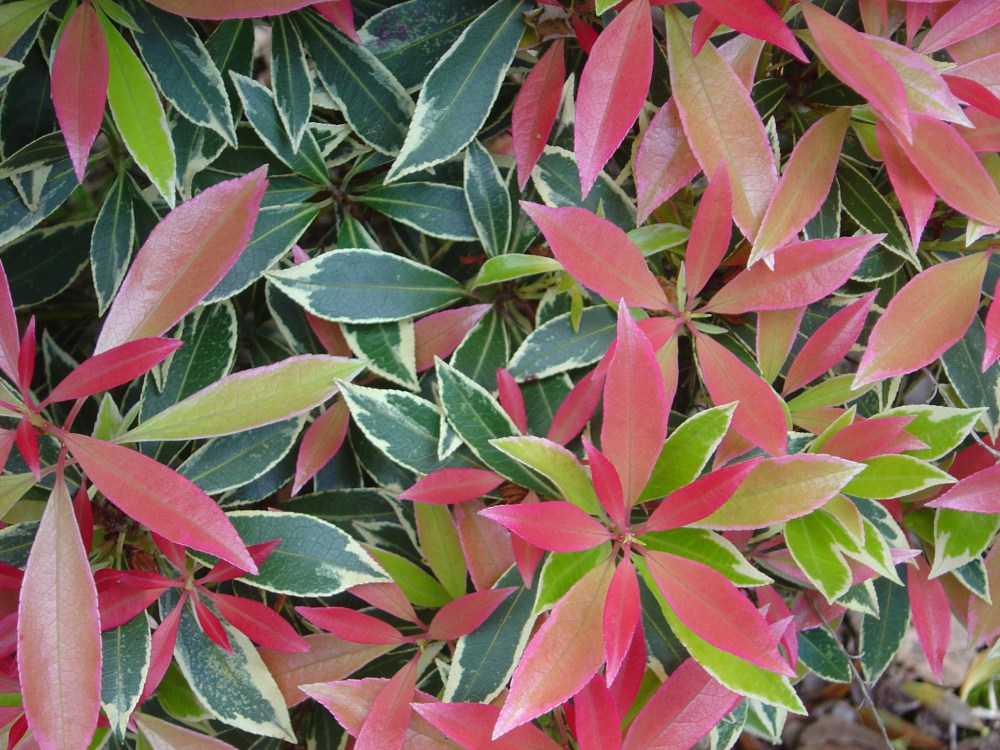From a pup, I was weaned on a mishmash of common and scientific plant names, and while I can hardly claim proficiency in either, probably I’m less comfortable with the common forms. While others say andromeda, I think Pieris (japonica or floribunda), and when writing, my leash must be yanked a time or two so I don’t stray too far from more familiar plant names. I think Edgeworthia chrysantha, but must write paperbush.
For the gardener, plants, and not nomenclature, should be of greatest importance, and who really cares what its called, though it is readily acknowledged that confusion between sweetshrub (Calycanthus), summersweet (Clethra), and sweetspire (Itea) can be troublesome. Apparently, I am easily confused, more than most I suspect, and while ideally I would have been a better study, I am happy to have enough of a clue to let Google fill in the gaps for me.
And so we circle back to Pieris, which has managed splendidly through recent freezes while so many other flowers (magnolias and camellias) have ruined. Little will come of this cold damage except there are a bunch of unsightly brown flowers, and a few newly emerged leaves have been lost. But, flowers of ‘Dorothy Wycoff’ (above) show no ill effect after nights of sixteen and eighteen degrees, and the compact, variegated leaf ‘Little Heath’ (below) began to bloom on the chilliest afternoon in a month.
Since I spend as little effort in maintenance as possible, I favor one plant over another as much for its sturdiness as for its beauty, and not all pieris are well suited to poorly drained clay soils. I suspect that references note its fondness for moist, but well drained soil, and probably an ambitious gardener could create such an environment, but not this gardener. And so, with no effort expended improving the soil except allowing leaves to decay where they fall, a pieris must earn its keep.
The common ‘Mountain Fire’ and ‘Snowdrift’ have failed, and failed again in clay soil, but also as victims to lacebugs that are attracted to all pieris, but to some more than others. ‘Dorothy Wycoff’ and ‘Scarlet O’Hara’ (above) are beautiful cultivars, but better suited to less than ideal drainage, and while variegated leafed ‘Little Heath’ and ‘Flaming Silver’ (below) suffer a bit more from lacebugs, this is hardly a bother.
I’ve not fully concluded the fate, and thus my favor for a newer introduction, ‘Katsura’, with the most splendid dark red new growth (above). It tolerates clay soil, at least in the first several years, but a lacebug infestation in last year’s hot, dry summer has diminished this spring’s flowers. 
To round out the collection, compact growing ‘Temple Bells’, ‘Cavatine’, ‘Prelude’ (Pieris japonica var. yakushimanum), ‘Bisbee Dwarf’ and the larger ‘Brouwer’s Beauty’ (Pieris floribunda, above) are long term survivors and not particularly troubled by clay or lacebugs. While none compare to ‘Dorothy Wycoff’, there’s not one I would be without.

Pieris has one of my very favorite flower forms- just lovely. They’re not for me though in our high pH soils and heat of central Texas. Dagnabbit.
Several pieris have been selected for Gulf coast gardens that will tolerate high rainfall, but I don’t know how they’d handle the heat. One in the Southern Living collection is grown in southern Alabama and Louisiana, and I’ve seen Dorothy Wycoff and Scarlet O’Hara growing vigorously in Alabama.